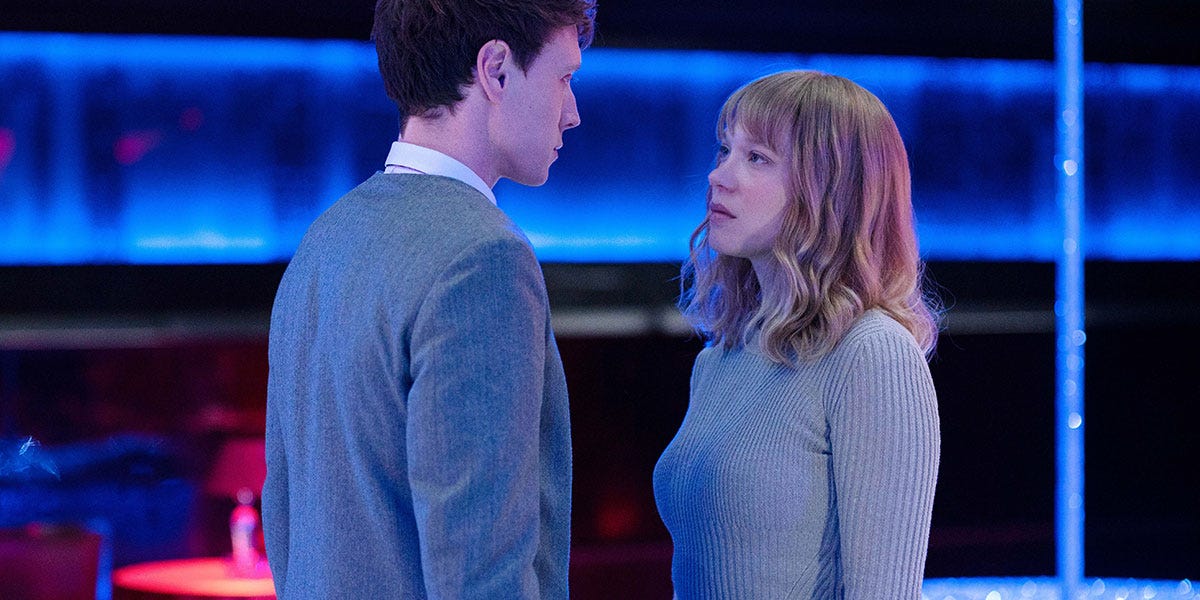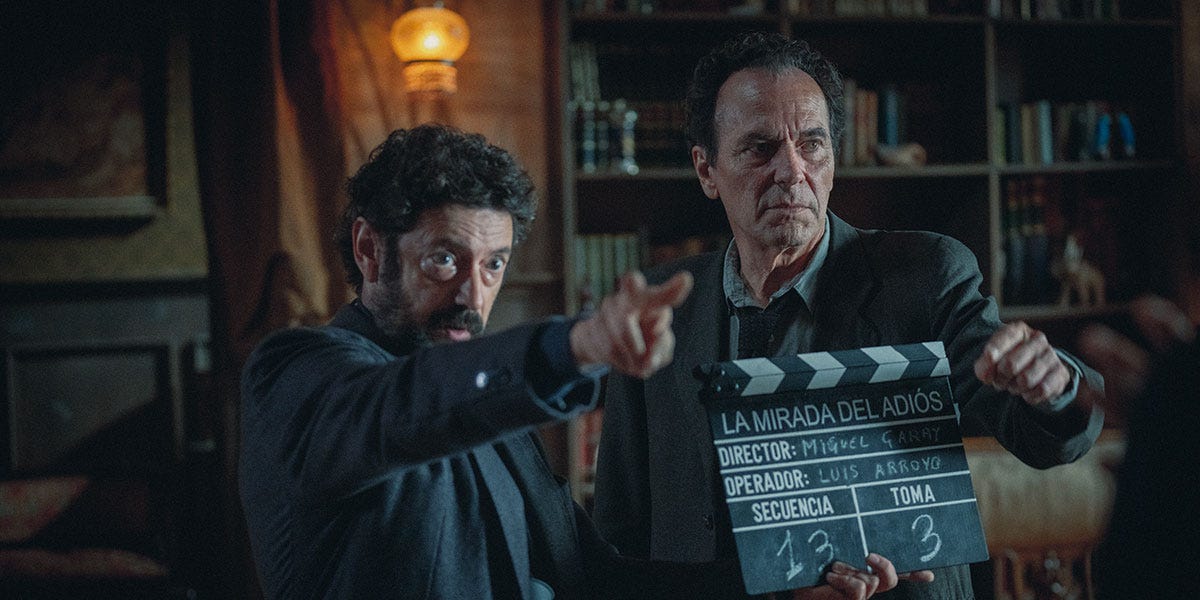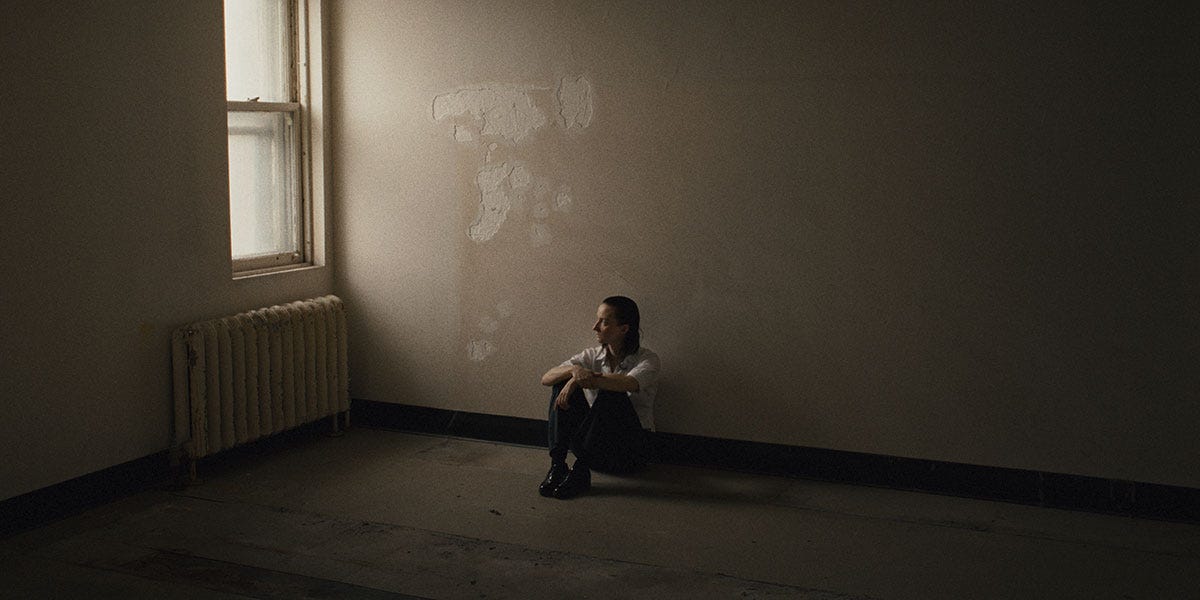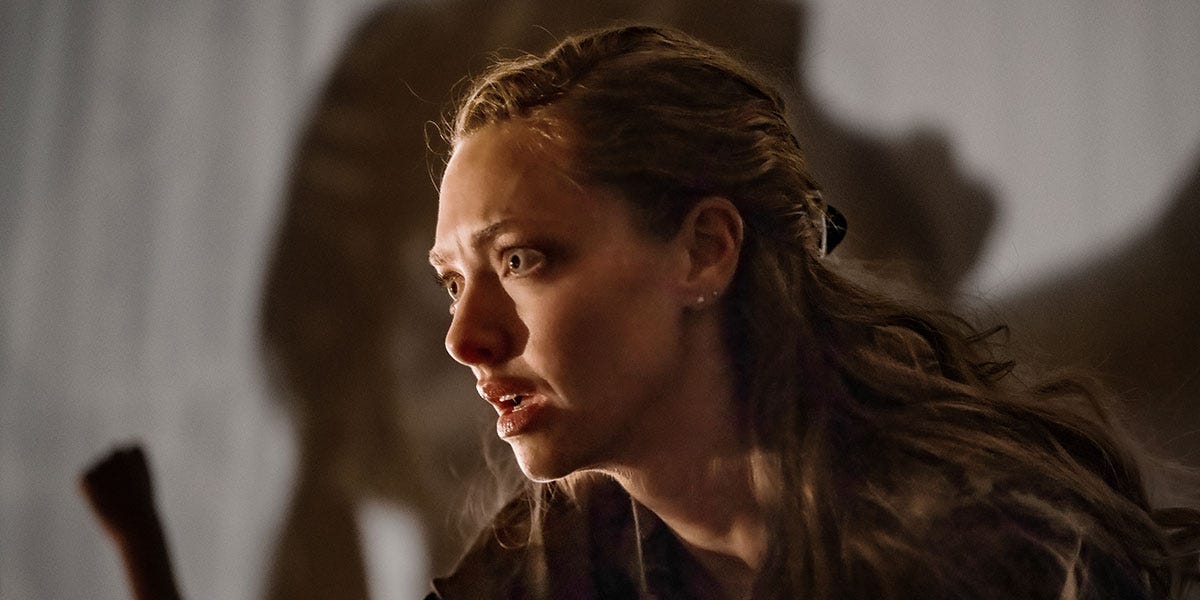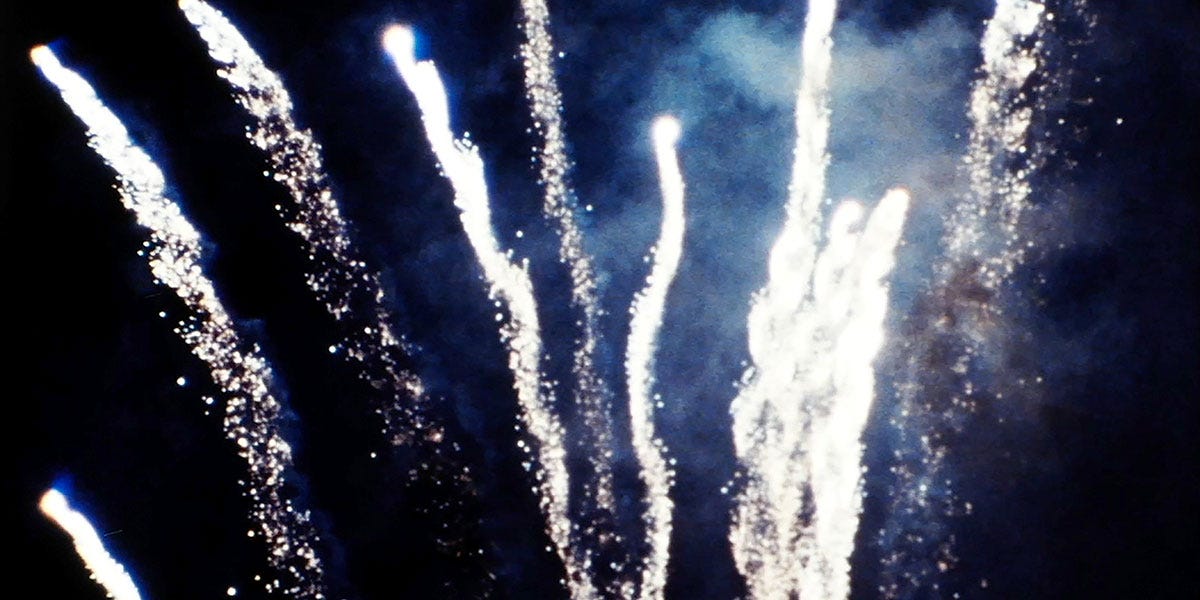I’ll save the festival analysis for another time, but it was a largely low-key affair for myself at TIFF this year. My usual issues with the festival—their unhealthy obsession with premiere status, their overall caginess that results in poor communication, and their ticketing system, to name a few—are all still here and will likely never change, given the nature of running a massive operation like this. Those issues felt smaller given the forces beyond the festival’s control, like the WGA and SAG-AFTRA strikes, as well as concerning news about TIFF, Berlin, and other film festivals trying to stay afloat during a pandemic. Issues of inconvenience tend to take a backseat when faced with existential threats.
But like I said, I’ll save those thoughts for later and focus on the films. Here’s my round-up of some of what I saw at the festival.
The Coverage
To start, a my published TIFF coverage from other outlets. Over at EDGE Media Network I previewed 11 queer titles playing the festival, then wrote four dispatches during the festival:
TIFF Dispatch 1: Anatomy of a Fall, Perfect Days, Monster, The Zone of Interest
TIFF Dispatch 2: Orlando, My Politcal Biography and The Human Surge 3
TIFF Dispatch 3: Next Goal Wins, National Anthem, Hit Man
TIFF Dispatch 4: Strange Way of Life, Without Air, Riddle of Fire
At The Film Stage, I was lucky enough to publish my annual round-up of my favourite short films playing in this year’s Short Cuts programme, as well as the following reviews:
The Royal Hotel
His Three Daughters
Dream Scenario
Fingernails
The Promised Land
About Dry Grasses
It’s been 9 years since I last saw a Nuri Bilge Ceylan film, and I guess he still likes to explore the different ways a man can be an asshole. I don’t mind this (I liked Winter Sleep), but I don’t have much interest in how Ceylan explores it here. The first hour or so, which dedicates itself to schoolteacher Samet (Deniz Celiloglu), unfolds well enough as him and his colleague/housemate Kenan (Musab Ekici) get accused of inappropriate behaviour with their young students. Before its premiere at Cannes there were rumblings of Ceylan tackling “cancel culture” with this film, so it was relieving to see him take a nuanced approach to the subject. Ceylan doesn’t create much ambiguity around Samet’s actions, as the way he favours one pupil definitely crosses a line. But while his behaviour is uncomfortable, it’s not criminal, so the focus stays on the power dynamic between teacher and student. Samet toes the line with how much he can reasonably get away with, and Ceylan leaves things open as to how far Samet would have gone.
It’s too bad that Ceylan drops this storyline for the remaining two or so hours, instead pivoting to a love triangle between Samet, Kenan, and Nuray (Merve Dizdar), another teacher who works in a neighbouring town. Nuray has an obvious interest in Kenan, but Samet’s wounded ego gives him the opportunity to assert dominance over his friend in their pursuit of the same woman. The first act, which lays out Samet’s psychology and motivations, works better because it places him within an institution and power structure that allows him to indulge his toxic, narcissistic instincts. The shift to a more isolated, three person dynamic puts the focus on a character who isn’t especially interesting on his own, and with his motivations made crystal clear, About Dry Grasses takes a tedious trek to its ending. By the time Ceylan throws in a surprise fourth-wall breaking moment, timed right before Samet crosses a point of no return, I couldn’t care less about trying to figure out its purpose.
Aggro Dr1ft
I tried to avoid the talk around Harmony Korine’s latest film as much as possible, but it proved difficult for me to detangle Aggro Dr1ft from the way Korine describes it as a bunch of pitches. It’s post-cinema, the future of filmmaking, a vibe, a living, breathing thing that could potentially go on forever, and so on. Shot in thermal vision and manipulated through special effects, artificial intelligence, and other technologies, Aggro Dr1ft is a loud, pulsating deep dive into Korine’s video game inspired world, although it doesn’t offer much inventiveness outside of its hallucinatory visuals. The novelty of that look runs its course well before the end credits, as Korine establishes this particular visual language then meanders and repeats himself rather than expand upon it in any meaningful way (despite all talk of pushing past narrative and convention, sections of Aggro Dr1ft come across as rehashes of Spring Breakers and The Beach Bum once you strip away the infrared). I had a lot of hopes for Aggro Dr1ft, but the last thing I expected was to come out of it feeling totally indifferent to its experimentations.
The Beast
The question that kept coming to my mind while watching The Beast was “to what end?” Bertrand Bonello’s latest film, a sci-fi epic about doomed lovers whose tragic romance repeats across several lifetimes, amounts to facile ideas in service of, I don’t know, vibes I guess. While set over three different timelines, it primarily takes place in 2044, where machines run everything. The robots see human qualities like emotion as flaws, and create a process where people have their DNA “cleansed” from traumas in their past lives to make them reliable, emotionless workers. Gabrielle (Lea Seydoux) begins the process, and experiences two prior versions of herself. The first, set in 1910 Paris, shows her as a wealthy pianist who crosses paths with Louis (George MacKay). Louis tries to woo Gabrielle, but she rejects him as she’s already married. The second story, set in 2014 Los Angeles, has Gabrielle as an aspiring model and actress. In this timeline, Louis is a virgin incel who stalks her and intends to murder her as revenge for all the women who rejected him.
Hopefully all of that reads as ridiculous as it is to see it in motion, with Bonello making every point he touches upon so obvious he might as well be pointing at the screen. The 2044 storyline is little more than a laughable, reactionary take on artificial intelligence and the threat it poses (they’re taking our humanity away!). The 1910 storyline, which takes up most of the first hour, turns out to be largely functional from a narrative standpoint. As we’re made to see Gabrielle and Louis meet, connect, and then brutally disconnect three times over, Bonello establishes foreshadowing signposts meant to underline the cyclical nature of their ill-fated love: consulting with a medium, a home invading pigeon as a sign of death, a natural disaster (Paris’ Great Flood in 1910, an earthquake in 2014, environmental destruction in 2044), an impending sense of doom, and so on.
The Los Angeles section becomes tedious as a result, a dull waiting game of the inevitable sandwiched between a borderline offensive appropriation of Elliot Rodger’s 2014 massacre of 14 people. I have no clue why Bonello thought it was a good idea to do this, or make us endure Louis’ vlogs where his dialogue paraphrases Rodger’s own words from his own YouTube videos. Whatever points Bonello wants to touch on regarding modern-day issues around communication get drowned out by his tone-deaf choices and lame, David Lynch-inspired execution.
Even when I don’t like Bonello’s films, at the very least I can enjoy his stylistic sensibilities (the guy has impeccable music taste, for one). A lot of The Beast echoes Bonello’s other works, which only serve as a reminder of how much better he’s done things in the past. The climax of The Beast pauses, rewinds, and restarts the film several times, recalling the climax of Nocturama. But in Nocturama that repetition underlined the failure of the characters in their attempts to disrupt the status quo. Sequences at a nightclub in 2044 are pale imitations of what Saint Laurent pulled off in one scene. And much of The Beast’s anxieties around the future share similarities with 2022’s Coma, which at least tied them to Bonello’s own concerns about the world his teenage daughter would have to survive in. The Beast does very little with what it attempts to touch upon, its concerns made thuddingly obvious and not worthy of much thought on their own merits.
Close Your Eyes
After last year’s narrative of films meant to showcase the “power of cinema,” Victor Erice’s first feature in over three decades doubles as an ambivalent response to that sentiment. Close Your Eyes is a film I hope to watch again soon (as of now it has no distribution in North America), but on my first viewing I found myself overwhelmed by its resigned, melancholy tone with regards to the current and future state of filmmaking.
Erice builds his story with elements pulled from real life, like the central character being a director who hasn’t made a film in almost thirty years. His last production was cut short by his lead actor’s sudden disappearance, and when an investigative TV show approaches him to do an interview about the still-missing actor, it prompts him to start his own investigation. Erice then delves into ideas around memory and identity, the uncertainty of both, and how they tie into cinema itself.
The narrative, which I don’t want to provide too much detail on, has ample opportunity to lean into sentimentality. Erice doesn’t go down that route, which would have been the easy way out. Where Close Your Eyes ends up is somewhere more uncertain, a place where one looks back with the awareness that it doesn’t offer much help on how to look forward. Early on, a film archivist remarks that he’s becoming more like an archaeologist as time goes on, and Erice spends the entire film conveying how it feels to transition into an unknown future, where recollections begin to outnumber experiences. Close Your Eyes doesn’t opt for escapism or try to rage against the immovable forces of time. It accepts its fate, acknowledging a time when cinema could “awaken the soul” and how much that power has dwindled since.
Humanist Vampire Seeking Consenting Suicidal Person
As a Canadian watching Canadian films, especially when they’re pushed at a festival like TIFF or by the country’s film industry as a whole, I can’t help but be cynical. Much of Humanist Vampire comes across like Ariane Louis-Seize pointed to the success of Wednesday on Netflix to get this made, and its ending makes the film feel like a stealth pilot for a TV show. Perhaps the stereotypes about Canadians and their modesty is true, since most new Canadian features strive to be little more than a variation on a well-established property/success, usually from the US.
This film is no different, as our glum teenage vampire Sasha mopes around because she’s too compassionate to kill people. I’m not the first person to point out that the entire film starts and ends with its self-explanatory title, and Louis-Seize does nothing to elevate its single idea. The only saving grace is Canadian filmmaker Stephane Lafleur, whose cinematography makes Humanist Vampire watchable enough.
Mademoiselle Kenopsia
Denis Côté’s latest, like most of his other “one for me” features (think Wilcox, Social Hygiene, or Joy of Man’s Desiring), is easy to enjoy on an experiential level. Filmed in an abandoned hospital, the title character (Larissa Corriveau) wanders empty rooms alone, and Côté regularly cuts away to nothing but shots of these empty spaces on their own. It’s nice to look at, and the sound by Jean-François Caissy (along with Stéphane Bergeron’s sound mixing) do a lot of work to establish ambiguity around its sparse narrative and the liminal nature of the seemingly endless hallways and rooms of its locale. Corriveau plays some sort of caretaker of this place, and the film’s atmospheric stretches get broken up by her one-sided phone calls where she muses about whatever’s on her mind.
Those discussions, and much of the dialogue in Mademoiselle Kenopsia, become a problem. Corriveau’s phone calls are more like monologues about basic, existential ideas meant to play off as insightful (at one point, Corriveau describes her state of being as the time between when we see lightning and hear thunder). Then there’s the introduction of a second person (Évelyne de la Chenelière), who pops in to deliver a lengthy monologue about a cigarette before disappearing, a lengthy sequence whose rambly nature clashes with the film’s precise visuals. These elements could have been enigmatic, but Côté opts to make the writing nothing but text, and by the time we hear a voice on the radio talk about liminal spaces (just in case someone didn’t pick up on it) I was frustrated by Mademoiselle Kenopsia’s lack of confidence. It’s no fun to have a film talk at you about its meaning, especially when it does a perfectly fine job evoking its ideas without the use of frequent explainers.
Memory
My relationship with Michel Franco’s films are complicated. He’s a filmmaker with a strong eye and the absolute worst instincts. He indulges in unnecessary cruelty that’s somehow justified because it doubles as a grim-faced commentary on politics, human nature, or whatever broad theme he wants to gesture at. Every time he takes one step forward he always finds a way to take two steps back: the dread-filled first half of New Order gives way to a miserable second half (and that’s not even addressing the blinders Franco wears around racial and social portrayals around upper and lower classes of society), the intrigue of Sundown ruined by a last-minute “twist,” or the howler of an ending to Chronic, which has the distinct honour of being Franco’s absolute worst film to date.
So colour me surprised that Memory might be Franco’s best film so far, largely because he’s found a way to clamp down on the awful things one would normally expect of him. Jessica Chastain plays a recovering alcoholic and survivor of traumatic sexual abuse during her childhood, who crosses paths with a man (Peter Sarsgaard) suffering early-onset dementia. She initially mistakes him for an old high school classmate who assaulted her, realizes her mistake, then decides to be his caretaker until they fall for each other. If you find that storyline weird and borderline appalling: welcome to the world of Michel Franco!
Most of Memory takes place in the aftermath of horrible events, and while writing has never been Franco’s strong suit, his concept of a woman plagued by memory connecting with a man plagued by having no memory is straightforward enough. Chastain and Sarsgaard give fine performances, although I found Chastain more compelling in how she adapts herself to Franco’s style (especially after last seeing her in The Eyes of Tammy Faye). And while it’s still riddled with Franco’s usual dour tone, unnecessary plottiness, and lack of insights, Memory remains tolerable, which is the kind of growth I didn’t expect to come from someone like Franco.
Seven Veils
Most Canadian cinephiles have a strange relationship with Atom Egoyan’s films, and hearing the reception to Seven Veils from fellow Canadians underlined this fact. When I listened to the conditions and qualifiers placed around Egoyan and his works, the stumbled attempts to lasso auteur theory around an ever-degrading filmography, I felt myself riding the curve others grade him on.
Unlike other independently minded filmmakers who rose to success alongside Egoyan in the ‘80s and ‘90s, he’s always found a way to keep working while others ran out of funding. Having seem some of Egoyan’s later output, Seven Veils included, my guess is that Egoyan’s ability to stay active has more to do with his willingness to compromise than any sort of savviness in navigating the industry.
At least Egoyan makes Seven Veils watchable, even if it’s almost always baffling. It helps to have an actor as strong as Amanda Seyfried, who commits to her role as a theatre director Jeanine, tasked with directing a restaging of Richard Strauss’ Salome for the Canadian Opera Company. The original version was directed by her mentor, and through gradual reveals we learn that much of his vision for that particular staging came from Jeanine’s childhood traumas, which she disclosed to him when they worked together. Jeanine’s hope is that her direction will allow her to reclaim her past, and try to take back control of her past from the men who shaped it for her.
There are layers to the story. The blending of art and reality for Jeanine, the parallels between Salome and her own story, and the fact that Egoyan directed the same opera in 2023 for the Canadian Opera Company are just a few that mingle around here. In Egoyan’s hands, his piling on of these layers resembles a stack of dirty laundry. And then there are the subplots, like Jeanine and her husband’s failing marriage, or the hilarious mini-Salome storyline that haphazardly applies the source material on a MeToo situation involving a prop master and the opera’s lead actor. I might have found more value in this kind of effort years ago, since Egoyan’s muddled execution points to some interesting ideas. But I feel like, in the search for significance with something like Seven Veils, there’s a fine line between crate digging and dumpster diving.
Wavelengths
I recommend reading Michael Sicinski’s coverage of this year’s Wavelengths programme, who’s been regularly covering it for years (you should also subscribe to his Patreon, as he’s been an invaluable resource for writing on contemporary experimental film). As a programme, Wavelengths has evolved and compressed over the years, with a combination of features and shorts that has gradually shrunk in size with each new edition of the festival. It was a pleasant surprise to see the shorts section expand from two programmes to three this year, although the third collection of shorts was more of a unique situation. Made up of Jean-Luc Godard’s Trailer of a Film That Will Never Exist: Phony Wars, Pedro Costa’s Daughters of Fire, and a recent discovery of short 8mm works Chantal Akerman made to get into film school, I took all three as curios, a trio of pitches from some of our greatest filmmakers.
The other two shorts programmes had, as it is with every year, several highlights. Programme 1 opened with a surprise screening of Michael Snow’s Standard Time, a nice gesture done in tribute to Snow after his passing earlier this year. The film is typical Snow: playful, structuralist, disorienting, and an enjoyable deconstruction and reconstruction of relation between image and sound. Following that was Rose Lowder’s Bouquets 31-40, where she films the surroundings of a rural estate in a manner that looks like a series of rapid jump cuts. This method, which may seem jarring at first, finds a certain rhythm within the natural environments she observes, like when we see bees jumping around the screen as they pollenate flowers.
Programme 2 offered a more consistent through line between its six short films. Viktoria Schmid’s NYC RGB triple exposes footage shot in New York through different colour filters, which invites viewers to see the city anew in spotting where these colours converge and diverge. Tomonori Nishikawa’s Light, Noise, Smoke, and Light, Noise, Smoke shows fireworks in isolation, and through the use of the film’s optical soundtrack takes away the deafening power commonly associated with fireworks displays. And Simon Liu’s Let’s Talk abstracts footage taken in Hong Kong (during the 25th anniversary of the country’s handover to Mainland China) to make an anxious, frenetic experience, as if the camera and soundtrack are constantly trying to grasp on to stable ground that no longer exists.






